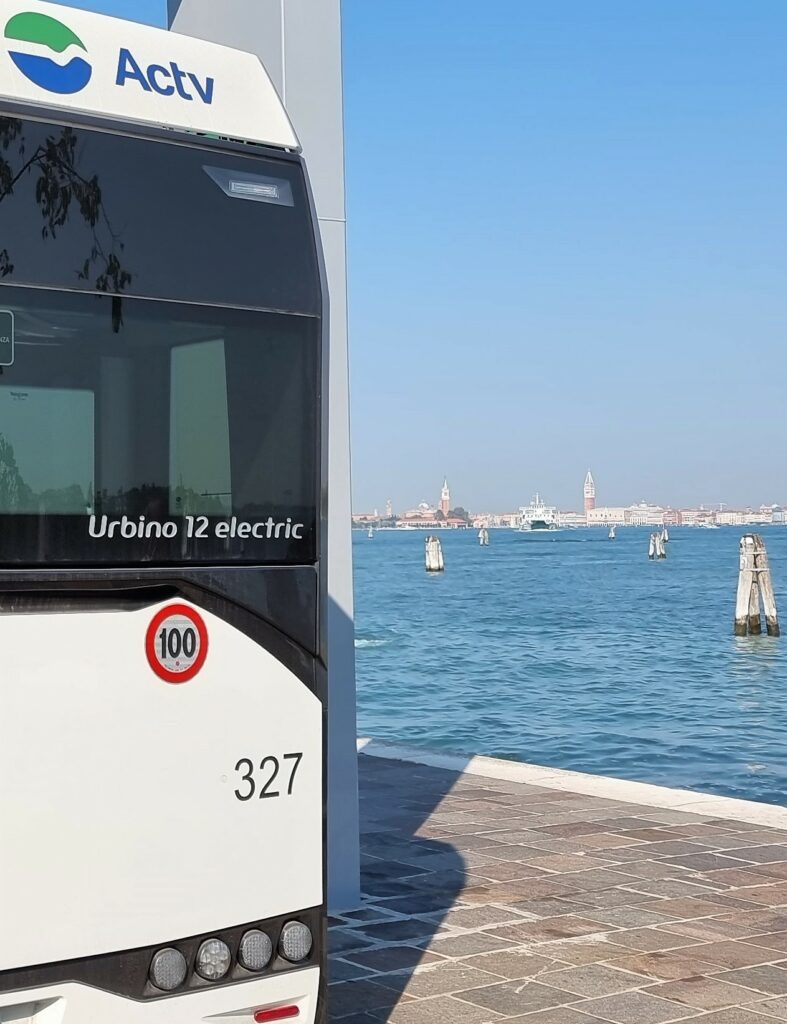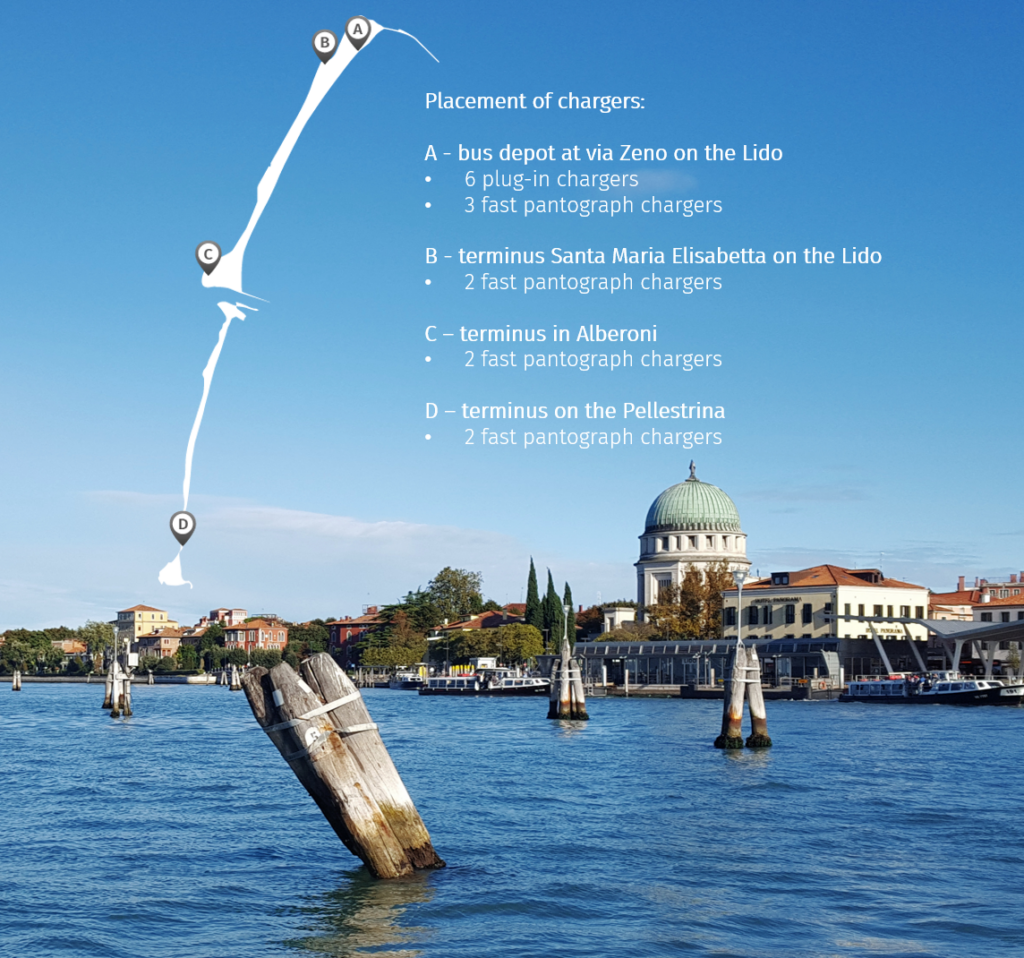In-motion charging (IMC)
In-motion charging (IMC) is another method of charging batteries in city buses. How exactly does it work?

The electrification of Venice is one of the most interesting green transport projects in Europe. 30 electric buses are now employed in passenger transport in two of the city’s districts situated on the islands of the Lido and Pellestrina in the Venetian Lagoon. The city’s remarkable project also included comprehensive charging infrastructure. Currently, only electric buses operate on the two islands. There are no longer any combustion vehicles in the fleet on the islands. Venice has inaugurated Italy’s first ever fully-electric “green” bus routes with a minimal impact on the environment.
The city of Venice is an icon of culture and trade and is a romantic dream for every tourist. Today, it is also a symbol of modernity and of a deliberate, environmentally friendly shift towards sustainable development.

The Lido is a prestigious district of Venice, situated on an island in the Venetian Lagoon. In contrast to the historic part of the city, the Lido’s landscape is formed by seaside promenades, grand villas and wide thoroughfares. In August 2021, 30 Solaris e-buses rolled onto its streets. Electric vehicles operate on all bus routes on the Lido, as well as in the neighbouring Pellestrina district, located on a nearby island. The A, C, CA and V bus routes on the Lido go through the whole island, which is more than 10 km long. Starting from the terminus at Santa Maria Elizabetta square, with its magnificent view of Venice as well as the famous St. Mark’s Square. Then the lines go all the way to the Alberoni terminus located in the southern part of the island. The buses are loaded there onto a ferry, a traghetto, serving the Venetian Lagoon. In this way they travel between the islands of Lido and Pellestrina. The everyday loading and unloading of buses onto, and off, ferries hence poses an additional challenge for the operator in Venice, ACTV.
The buses ordered by the operator in Venice are Solaris Urbino 12 electric (you can read more about electric buses here). The vehicles use energy derived from batteries with a capacity of over 115 kWh. The drive unit consists of an axle with 125 kW integrated electric motors. The vehicles are adapted to be charged using a plug-in depot charger and for fast charging by means of a pantograph mounted on the roof.

The city’s investment also included the construction of the necessary charging infrastructure on the islands (here you will find an article about charging electric buses). A total of 15 chargers have been installed on the Venetian islands: 9 fast pantograph chargers and 6 slow plug-in chargers. Due to the application of state-of-the-art technology, the charging processes take place automatically, without the need for manual intervention. The whole investment, i. e. vehicles and charging infrastructure, is worth about €27 million.

The e-buses have replaced the existing diesel models and have allowed for zero-emission public transport on the Lido and Pellestrina. These are the first ever fully-electric “green” bus routes in Italy. According to ACTV’s calculations, the investment helps to reduce CO2 emissions generated by public road transport by 2,300 t a year! For local residents this makes living more pleasant, i. e. less noise, less exhaust gases and a possibility to unwind and breathe in the fresh sea breeze.

In-motion charging (IMC) is another method of charging batteries in city buses. How exactly does it work?
NMC, LFP and LTO are types of batteries, with different chemistries. Learn how each battery types affects vehicle capabilities.
What components is a battery made of? What kind of cell chemistry can it have? What are the key functional parameters? Check it out!
Before the Summit in Hamburg begins, it is worth taking a closer look at what UITP is.
Learn more about the changes introduced by GSR2 and how they contribute to protecting all road users.
BRT in Aalborg: the city's solution for enhancing urban transport – what makes it so effective?